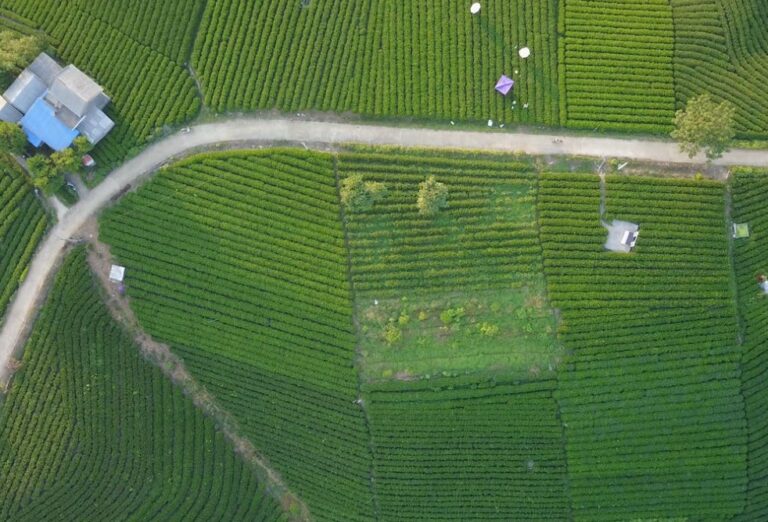Intensive farming is a buzzword in today’s agriculture scene. It’s all about maximizing output. Picture vast fields with just one crop or huge barns housing a single type of livestock. This approach is not just by chance; it’s a response.
With the world’s population booming, there’s a pressing demand: more food, but at a price that’s pocket-friendly. But like all things, intensive farming has its highs and lows. This article breaks it down, offering a deeper look into the benefits and challenges of this farming method.
Table of Contents
Advantages of intensive farming
The following are the main advantages of intensive farming practices.
High crop yield
Intensive farming employs the monoculture approach, where vast fields are dedicated to a single crop variety. This allows for a standardized procedure for planting, maintaining, and harvesting, which translates to higher yields. Similarly, when applied to livestock, focusing on a single animal type streamlines the processes from birth to maturity, optimizing production rates.
Simplicity in implementation
One of the inherent benefits of intensive farming is its simplicity. Instead of managing diverse crop types or livestock varieties, farmers can concentrate their expertise on a single crop or animal type. This uniformity reduces the complexity in terms of equipment and methodologies, streamlining agricultural operations.
Technological advancements
Contemporary agricultural technology is increasingly tailored to complement the monoculture system inherent in intensive farming. This specialization facilitates large-scale planting, irrigation, and harvesting. Tracing back to the 20th century, mechanization alleviated the reliance on manual labor, heralding a new era of productivity in agriculture. The livestock sector has similarly benefited, with automated systems for feeding, milking, and even waste management, ensuring operational efficiency.
Economic efficiency
Focusing on a singular crop or livestock type allows farmers to harness efficiencies, optimize land use, and maximize returns. This not only increases profitability for producers but, by facilitating the production of abundant food at reduced costs, also translates to cost savings for consumers.
Easy for farmers to supervise and monitor
Automation is the game-changer in intensive farming. With machines taking on many tasks, farmers can keep an eye on the bigger picture. Monitoring crops or livestock becomes less of a hands-on chore and more of an oversight task. This streamlined approach ensures that everything runs smoothly.
More variety of food can be produced
One might think focusing on a single crop or animal type limits variety. But that’s not the case. Different farmers concentrate on different produce, resulting in a vast array of food products. From fruits and vegetables to various livestock, intensive farming ensures there’s plenty on our plates.
Specialized production
Doing one thing and doing it right. That’s the essence of intensive farming. By honing in on a single crop or animal type, farmers become experts in their chosen field. They develop keen insights, from spotting early signs of disease to predicting weather impacts. Plus, specializing leads to financial benefits, too. Buying in bulk often translates to discounts, which can mean savings for farmers.
Better scalability
Growth is crucial for any business, farming included. Intensive farming embraces this by relying heavily on machines. As a result, farmers can expand operations without needing to hire many more hands. It’s about producing more without ballooning costs.
Disadvantages of intensive farming
These are the main disadvantages of intensive farming.
Increased use of fertilizers and pesticides
Intensive farming often involves the heavy use of chemicals to maximize yields. Unfortunately, this excessive use can have harmful environmental impacts, contaminating waterways and harming beneficial organisms.
Read also: The 10 best green alternatives to chemical fertilizers
Creates an increase in pesticide resistance
It’s a vicious cycle. Pests are treated with pesticides, but some survive, evolving to resist these chemicals. Subsequent generations inherit this resistance. This forces farmers to use more potent pesticides, leading to potential health risks when residues remain on produce.
Destroys soil nutrients
Intensive farming, with its constant cropping, depletes the soil. A 2017 UN-backed study highlighted that one-third of our planet’s soils are now degraded due to such practices. This harms the soil’s microbe biodiversity, disturbing the ecosystem balance and affecting productivity in the long run.
Encourages high use of fertilizers
With soil nutrients in decline, farmers turn to synthetic fertilizers. While they boost productivity in the short term, they also risk polluting underground water sources, leading to environmental concerns.
Possibility of poor-quality food products
The quality of our soil directly affects the nutritional value of our food. As soil health degrades, the nutritional content of the crops also dwindles. For our food to be nutritious, our soils need to be healthy and balanced.
Hard for traditional farmers to compete
The high yields and efficiency of intensive farming can overshadow traditional methods. Traditional farming, though more natural and holistic, can’t match the production pace of its intensive counterpart, making it hard for such farmers to compete in the market.
Leads to worsening pest problems
Pests love monocultures. When there’s a plentiful food source, pests multiply rapidly, leading to infestations. The lack of biological and genetic diversity in monocultures aids this proliferation. Historical data, such as the increase in pest species in cotton monoculture in 1983, further accentuates this downside of intensive farming.
Intensive farming has its highs and lows
Intensive farming, a prevalent method in modern agriculture, undoubtedly brings about increased yields and operational efficiencies. However, as with many advancements, it comes with its own set of challenges. From the degradation of soil quality to increased resistance to pests, the downsides of this method are evident.
It’s crucial for stakeholders, farmers, and policymakers alike to strike a balance — to ensure that while we benefit from the efficiency of intensive farming, we also prioritize the long-term health of our environment, food quality, and the broader agricultural community.
Read also: Regenerative agriculture, what is it and what are its benefits












